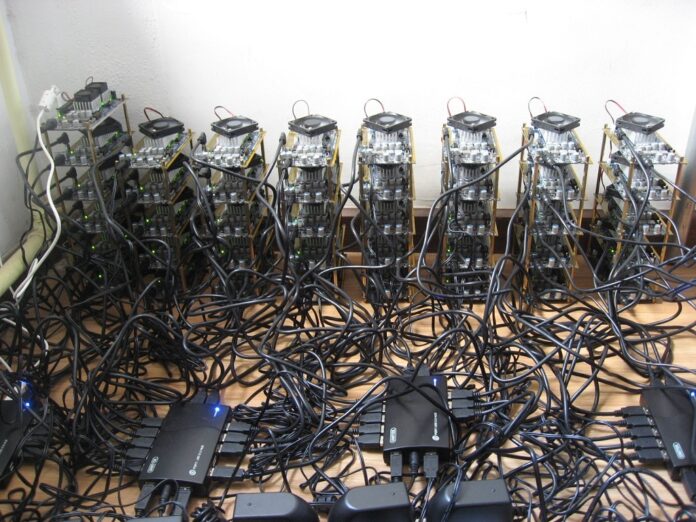Statistics show that bitcoin mining now consumes more electricity in a year compared to Ireland or Namibia. If it continues at the rate that it is than bitcoin mining is predicted to consume all of the world’s electricity by February 2020.
According to Digiconomist, bitcoin’s current estimated yearly electricity consumption is 30.24 TWh. That’s the equivalent to 0.14 percent of the world’s total electricity consumption. That may not seem a lot, but when you compare that to a list of countries using less electricity, it’s quite significant. A 2017 report published by the International Energy Agency (IEA) illustrates that the energy use consumed by a number of countries has been overtaken by the electricity consumed within the entire bitcoin network.
Take Ireland for instance. The Emerald Isle reportedly uses around 27 TWh of electricity per year, meaning that the global bitcoin mining consumption is 11.32 percent more than what Ireland uses. On the other hand, in Namibia, the yearly electricity consumption amounts to a mere 3.8 TWh, according to the IEA, putting the global bitcoin network electricity use at over 155 percent.
It’s easy to forget the amount of electricity that’s needed to mine bitcoin. Yet, with bitcoin continuing its colossal surge in price, the value of the reward goes up too. This, in turn, means that more miners will assign extra computers to running the network. As a result, the amount of electricity being employed will also rise.
At the moment, though, it doesn’t look like bitcoin is slowing down with its price climb. So much so, that at the time of publishing, the price of bitcoin is currently trading at $11,072, according to CoinMarketCap, swiftly sailing past the $10,000 barrier it reached yesterday. Such is the continuing rise of the digital currency that in the past seven days its value has increased by 34.60 percent, pushing its market total to just under $185 billion.
When you consider how far the digital currency has come since the beginning of the year – rising over 1,000 percent – and the obstacles that it has overcome it’s nothing short of impressive. Of course, with bitcoin’s rising value, fears are circulating that it is in a bubble that may burst at any time.
When or if that will happen remains to be seen. Yet, consider Digiconomist’s Index, it seems apparent that the amount of electricity needed to mine bitcoin is only going to continue rising. At present, in terms of electricity consumption used, the Index suggests that bitcoin is the closest to Morocco, which uses around 30.7 TWh. Interestingly, if bitcoin were a country it would be ranked 64th in the world based on the electricity that it consumes. Additionally, the Index shows that 2.8 million U.S. households could be powered by bitcoin mining whereas Visa’s energy consumption would only power 50,000.
Despite these figures, it’s unlikely that miners will stop mining for bitcoin even if a high amount of electricity is used. For many, mining can provide a solid stream of revenue and those eager to find new coins will continue to run the machines to do that. A solution to the energy consumption would be for bitcoin to move from a proof-of-work consensus algorithm, which uses miners, to a more energy efficient proof-of-stake consensus where coin owners create blocks. As yet, no solution has been put into place, but it provides a possible avenue for the future.
One has to wonder, though, if the amount of electricity needed to mine bitcoin would be considered worth overlooking if it amounted to less than that of banks and existing processors in existence? Yet, for that to happen, competitors would need to be forced out. Of course, while bitcoin may have scaled the $11,000 milestone earlier this week, marking an historic step, the digital currency will need to do more before it can overtake established systems already in place. Not only that, but with bitcoin rising in value, the idea of using the digital currency for day-to-day purchases, such as in coffee shops, is becoming less practical, practically for those who simply want to hold on to their coins to reap a profit in the future.
However, even though the amount of energy consumption that bitcoin mining uses is rising on a daily basis, with bitcoin’s price continuing its upward trajectory, electricity consumption is unlikely to be at the forefront of many people’s minds.
















